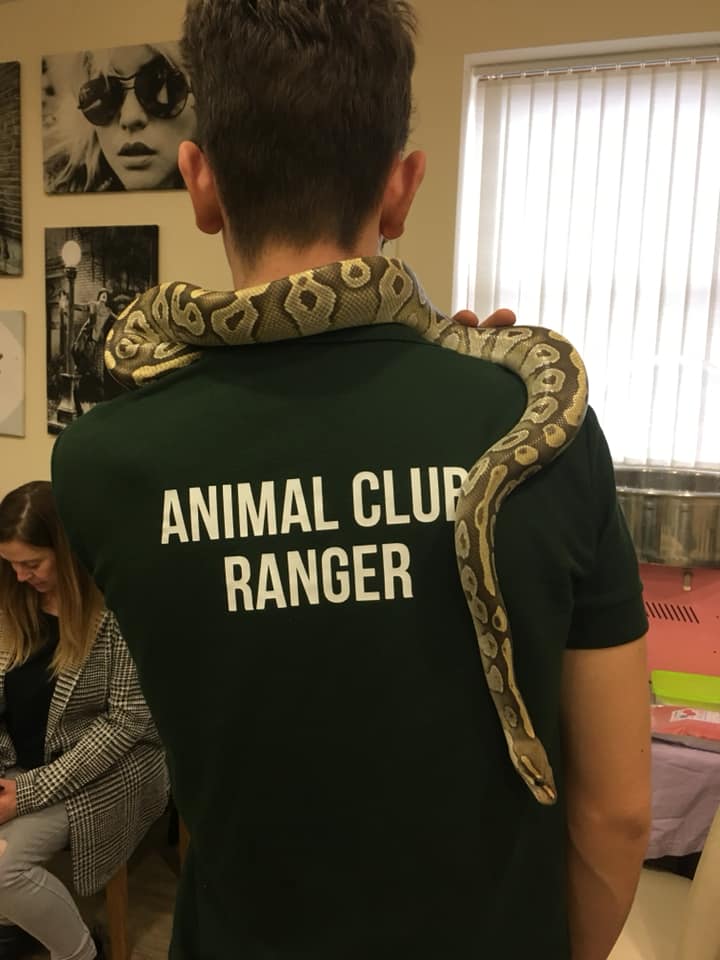What does a Royal Python look like?
A royal python is averagely around 4.5 feet long. The snake is long with a soft belly and a broken back. Sox our royal python is long enough to slither over two people and sit comfortably across a full grown man’s shoulders.
What animal class are they?
The python snake is a reptile, meaning they are cold blooded.
Where do they come from?
Pythons are found naturally in West Africa.
What does a Royal Python eat?
Rodents such as rats, mice, squirrels, hamsters make up the central part of the diet for the Ball Python or Royal Python. They will consume prey that is the same size or a lot bigger than their body. Python’s are fussy eaters! They will not eat anything for months until something comes along that they like.
Reproduction
When a snake lays its eggs, there’s are usually between 4 and 6 of them in a clutch. The female will place them in a burrow underground. They will come up to surface about 60 days later. However, she will be nowhere around/ Leaving the baby snakes to learn how to find food for themselves.
Is a Royal Python on a good pet?
After meeting Sox (https://animal-club.co.uk/meet-our-animals/) you will most definitely want to get yourself a snake like him. These snakes never bite so, when it does feel threatened, it will curl up into the ball and make a getaway instead of standing up to the threat. Take a look below to see how to care for a Python Snake.
How do you look after a Royal Python?
1) A royal Python snake needs its natural habitat to be replicated in your home. A 4ft enclosure is perfect for a fully grown snake. Never keep your snake cramped as naturally, they are free to travel wherever they want to go.
2) A heat lamp should be bought so that one end of the enclosure can be hot while the other cool. This allows the snake to select their level of heat, in West Africa hey will moe between burying themselves and lying under shade.
3) Ensuring your snake has a UVA or UVB light (especially for pythons) in their cage means they can get the correct vitamins they need, you may find the python skin is shedding more than usual if you don’t provide one of these.
4) On the floor of the enclosure, ‘substrate’ will need to be used to comfort the snake (bits of bark and forest is best – make sure to ask your local pet shop owner for advcie on what is best.) On top of this – steady branch, with lots of holes so your snake can climb on and in and out of it.
5) Feeding your snake is a controversial opinion, while some find it fascinating others find it gross! One a week you must supply your snake a live rate or mouse. However, you can train an adult ball python to accept pre-killed food if you are patient and persistent
6) One fundamental fact to remember is to wait 45minutes (minimum) to pick it up after you’ve fed your snake.
Questions for the class:
1)Name one feature of a Python Snake
2)Where could you find a wild python?
3)What would a wild python eat?
4)How many eggs are in a snakes clutch?
5)What do Python Snakes do when they feel threatened?
6)What does the mummy snake do once the eggs hatch?
7)How big should the snake’s enclosure be?
8)Why should you put a branch in the snake’s enclosure?
9)What should you feed your pet python?
10)What is our snake called? What would you call yours?



